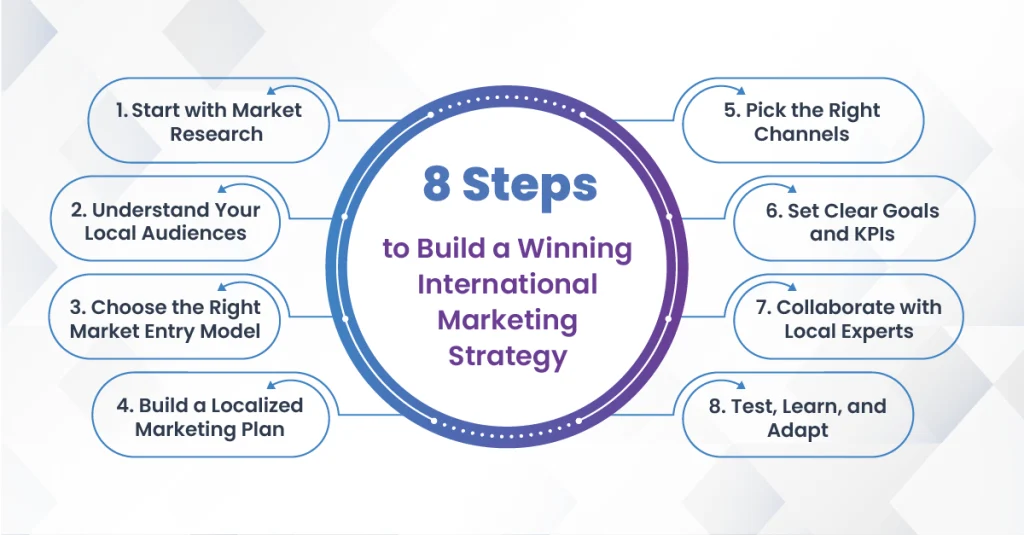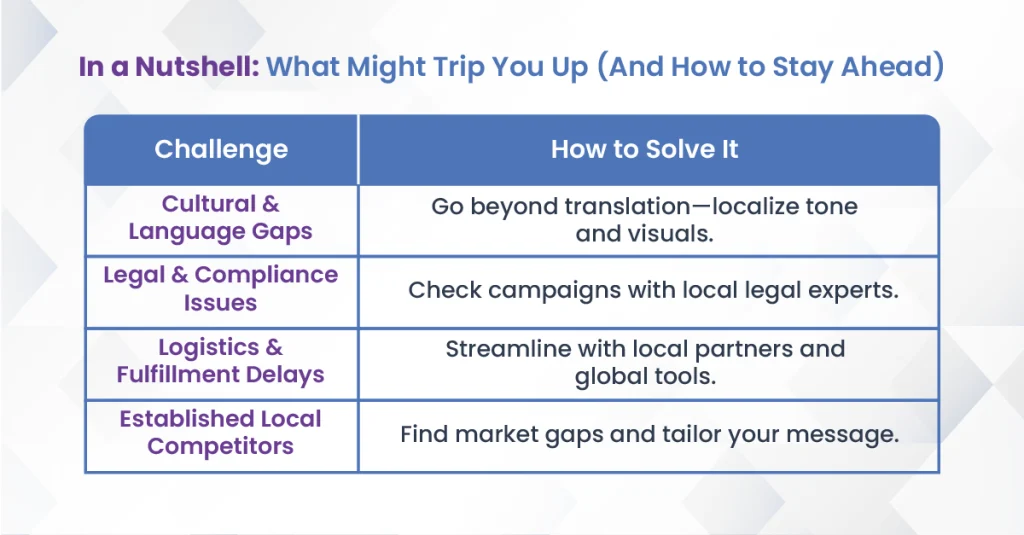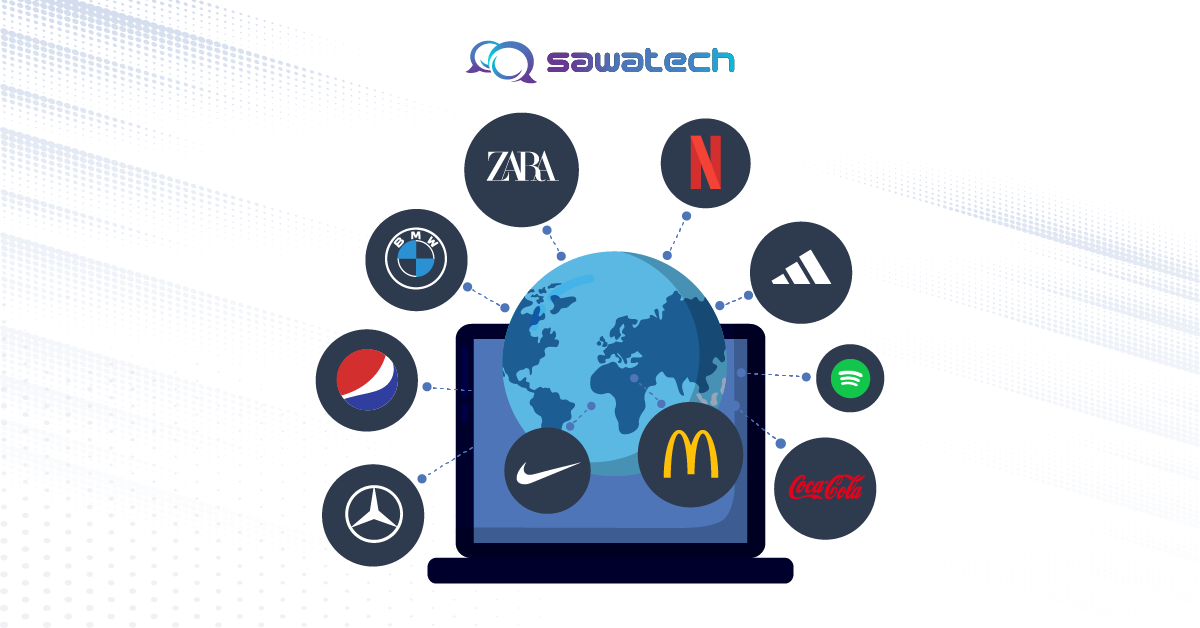Going global? Great. But let’s talk about how to actually succeed at it.
Expanding into international markets isn’t just about translating your website or launching the same ad campaign with a new flag in the corner. Today’s global audiences are savvy, diverse, and expect personalized experiences that speak their language, literally and culturally.
So, how do you move from “we want to go global” to actually building meaningful connections across borders?
That’s exactly what we’re diving into.
In this blog, we’ll explore proven strategies that leading brands use to win hearts (and market share) around the world. From localizing your content the smart way to navigating cultural nuances that make or break campaigns, we’re covering the real stuff that drives results.
Whether you’re just stepping into new markets or refining your global marketing strategy, this guide is here to help you do it right with confidence, clarity, and cultural fluency.
Let’s get started.
What Is an International Marketing Strategy?
An international marketing strategy is more than just promoting your product globally. It’s about creating a clear, structured approach that balances brand consistency with local relevance. While some companies opt for a unified global campaign, others fully localize their efforts for each market. The most effective strategies blend both: aligning your core brand message with the culture, behavior, and expectations of local audiences.
Ultimately, localized marketing is what brings your global strategy to life. It ensures your campaigns connect, convert, and build trust, no matter where in the world your audience is.
Why is International Marketing Important?
In a world where people shop, scroll, and connect across continents, staying local in your marketing approach can hold your brand back. Expanding internationally isn’t just about bigger reach; it’s about building a business that’s adaptable, resilient, and built to grow in the long run.
Here’s why we believe thinking beyond borders makes sense now more than ever:
1. You reach new audiences—without starting from scratch
Global platforms like Amazon, TikTok, and Google make it easier than ever to introduce your brand to new markets. But reaching people is just the start—localized marketing helps you actually connect with them.
2. Localization builds trust
People are more likely to engage with a brand that speaks their language, understands their culture, and respects their values. Tailoring your message to local norms helps you earn that trust.
3. It makes your brand more relatable—and more memorable
A campaign that works well in one country might fall flat in another. Localizing your tone, visuals, and messaging ensures your brand resonates wherever it shows up.
4. You reduce risk by not depending on a single market
Expanding globally can help you stay steady when one market slows down. Whether it’s economic shifts, seasonal demand, or political changes, being present in multiple regions keeps your business balanced.
5. You make the most of global trends and insights
Sometimes, what’s trending in one region sparks something new in another. By paying attention to global markets, you can spot opportunities early and stay ahead of the curve.
6. You future-proof your business
Growth is about being smart. Expanding into the right markets with the right message helps you build a stronger, more resilient brand for the long term.
Discover how a well-executed marketing localization strategy can help your brand resonate worldwide.
Steps to Build a Winning International Marketing Strategy From Research to Execution
Expanding into international markets requires more than ambition. It takes a clear, well-informed strategy. From choosing the right regions to adapting your messaging, every decision plays a role in how your brand is received abroad. A strong international marketing strategy ensures your efforts are focused, your message resonates, and your business is set up for long-term success.
1. Start with Market Research
Identify which regions offer real potential for your product or service. Look into:
- Market demand and competition
- Customer behavior and purchasing habits
- Language, culture, and legal considerations
The goal: choose markets that are both promising and a good fit for your brand.
2. Understand Your Local Audiences
Once you’ve picked your target markets, dive deeper into what makes each audience tick:
- What motivates them to buy?
- What platforms do they use?
- What kind of messaging and tone works best?
This insight will shape your marketing voice and approach.
3. Choose the Right Market Entry Model
Decide how you’ll enter each market. Common options include:
- Exporting (direct or through distributors)
- Licensing or franchising
- Joint ventures or partnerships
- Setting up local operations
Each has pros and cons depending on your resources, goals, and risk tolerance.
4. Build a Localized Marketing Plan
This is where global vision meets local execution. Make sure to:
- Adapt your brand message to the local language, tone, and values
- Customize visuals, slogans, and offers
- Align with local holidays, trends, and cultural sensitivities
Localization makes your brand feel native, not foreign.
5. Pick the Right Channels
Go where your audience already is. Depending on the region, that could mean:
- Local social platforms (e.g., WeChat, LINE, or TikTok)
- Country-specific search engines or marketplaces
- Offline channels like radio, print, or out-of-home ads
What works in one market may not work in another—channel strategy matters.
6. Set Clear Goals and KPIs
Define what success looks like in each region:
- Brand awareness?
- Website traffic?
- Sales growth?
- Customer retention?
Track both global and local metrics to measure progress and optimize.
7. Collaborate with Local Experts
Work with regional marketers, translators, or cultural consultants to fine-tune your approach. They’ll help spot cultural blind spots, improve localization, and add nuance that outsiders may miss.
8. Test, Learn, and Adapt
Start small, measure results, and scale what works. Run A/B tests with localized content, and don’t be afraid to pivot your approach based on real-world feedback.

Common Challenges in International Marketing—and How to Tackle Them
Expanding into new markets can unlock major growth opportunities, but it also introduces new layers of complexity. Let’s take a closer look together at some of the most common international marketing challenges and practical ways to solve them.
1. Cultural and Language Barriers
Every market has its own way of communicating. What works in one region might fall flat—or even offend—in another. Without proper localization, marketing messages can easily miss the mark.
What You Should Do: Invest in professional multilingual translation and localization services. Go beyond word-for-word translation; adapt your tone, imagery, and messaging style to fit each local culture. This is key to building trust and engaging authentically with local audiences.
2. Legal and Regulatory Complexity
Each country has its own advertising laws, data privacy regulations, and industry-specific restrictions. A campaign that’s compliant in one country could face fines or be banned outright in another.
What You Should DoPartner with local legal experts or compliance consultants to review your marketing plans before launch. Ensure that everything from your promotions to your data collection practices aligns with local regulations.
3. Operational and Logistical Hurdles
Even with strong marketing, poor fulfillment or slow delivery can damage customer satisfaction. Managing inventory, shipping, and returns across borders takes coordination.
What You Should DoUse region-specific logistics partners and consider localized fulfillment strategies. Leveraging tools like international order management systems can help streamline supply chains and improve delivery times.
4. Tough Local Competition
Entering a new market often means going head-to-head with established local players who already know the audience well.
What You Should DoStart with deep market research to understand the competitive landscape, consumer expectations, and gaps you can fill. Focus on what sets your brand apart and tailor your value proposition for each region.

The Role of Digital Marketing in International Campaigns
Digital marketing is a powerful enabler for international growth. It allows brands to connect with customers across borders through targeted, scalable, and data-driven strategies. When done right, it creates meaningful, localized experiences for global audiences—without losing consistency.
Multilingual SEO and Advertising
Visibility is everything in new markets. Optimizing your content for local search engines and using the right keywords in each language helps your brand get discovered by the right audience. Paid advertising campaigns, when localized, also deliver higher engagement and better ROI.
Cross-Platform, Culturally Relevant Engagement
Social media plays a huge role in global brand presence. With social media translation services, businesses can stay active and relevant on platforms like Instagram, LinkedIn, and Facebook, ensuring every post feels native to its audience and aligned with local trends.
Data-Driven Decision Making
Analytics and tracking tools allow marketers to monitor global campaign performance in real time. By understanding what works in each region, you can quickly adapt messaging, creative assets, and targeting to improve results and reduce wasted spend.
Personalized, Localized User Experiences
A great user experience goes beyond translation. Tailoring website content, product recommendations, and email marketing campaigns based on location, language, and user behavior helps build stronger connections and increase conversions.
Digital marketing gives businesses the flexibility and precision needed to compete—and win—on a global scale. From search to social to customer experience, the right digital tools make international campaigns more agile, effective, and impactful.
→ Explore our Social Media Translation Services to engage global audiences with localized content that resonates.
Quick Tips & Tricks for Global Marketing Success
- Think Local Early – Plan for localization from the start, not as an afterthought.
- Use AI Smartly – Leverage AI for translation, content creation, and global audience insights.
- Automate Repetitive Tasks – Use tools like HubSpot or Salesforce to manage workflows and save time.
- Tailor Your Message – Adapt tone, imagery, and calls to action for each region.
- Test Before You Scale – Run localized A/B tests to see what works best per market.
- Align with Local Calendars – Time your campaigns around regional holidays and buying seasons.
- Work with Experts – Partner with marketing translation specialists to avoid cultural missteps.
- Track Regional Metrics – Analyze performance by country or language to optimize effectively.
- Translate Social Content Too – Localized posts boost engagement and build trust.
- Keep a Glossary & Style Guide – Maintain consistency across all your multilingual content.
Unlocking Growth Through International Marketing Strategies
Take the next step toward global success. Whether you’re entering new markets or scaling existing ones, the right mix of technology, localization expertise, and strategic planning makes all the difference.
Let us help you create marketing campaigns that resonate worldwide and deliver measurable results.
Contact us now to learn more about our Marketing Translation Services



